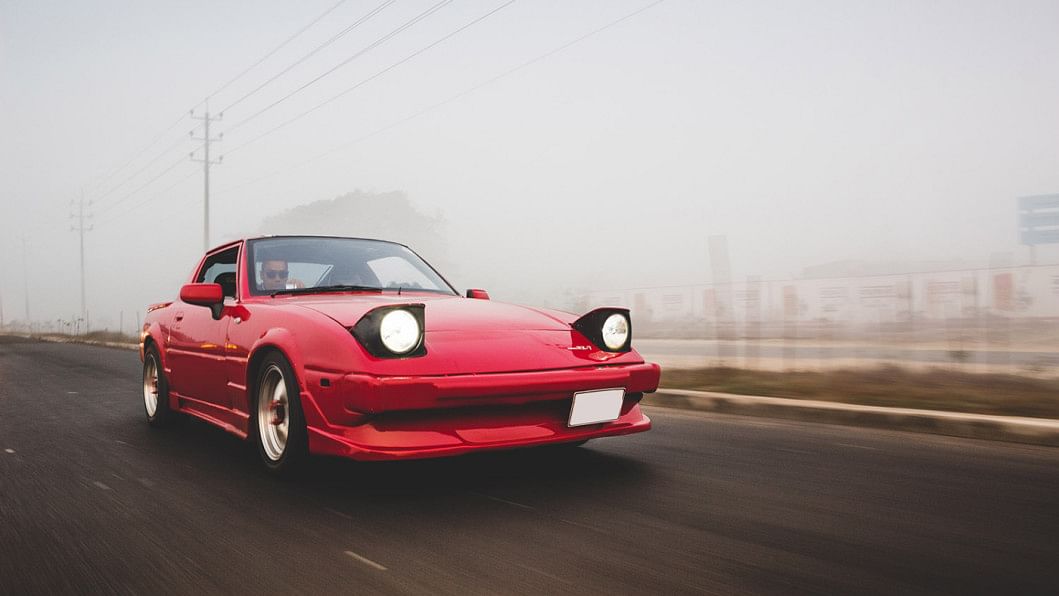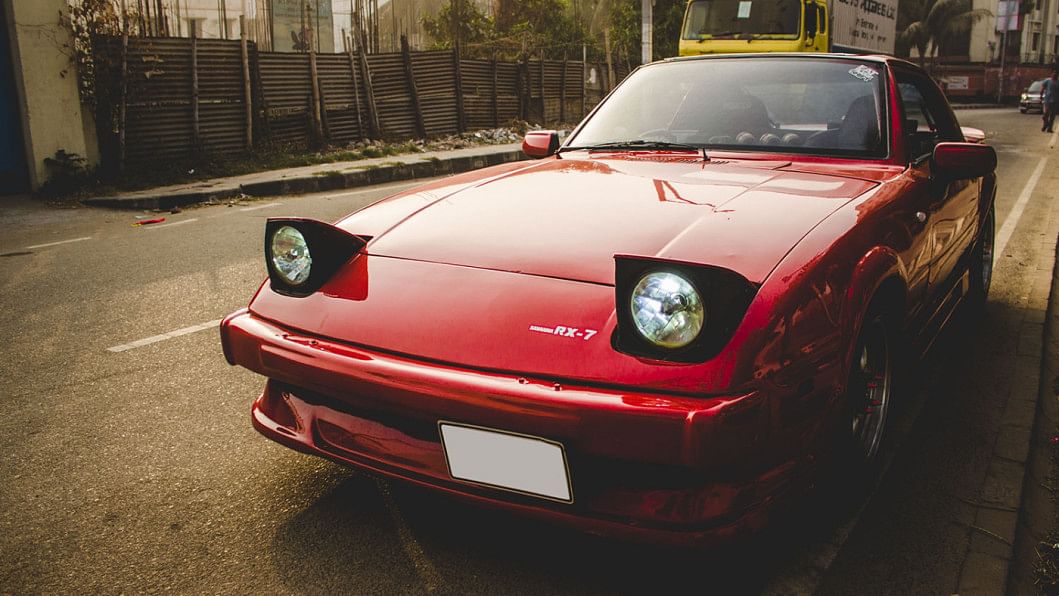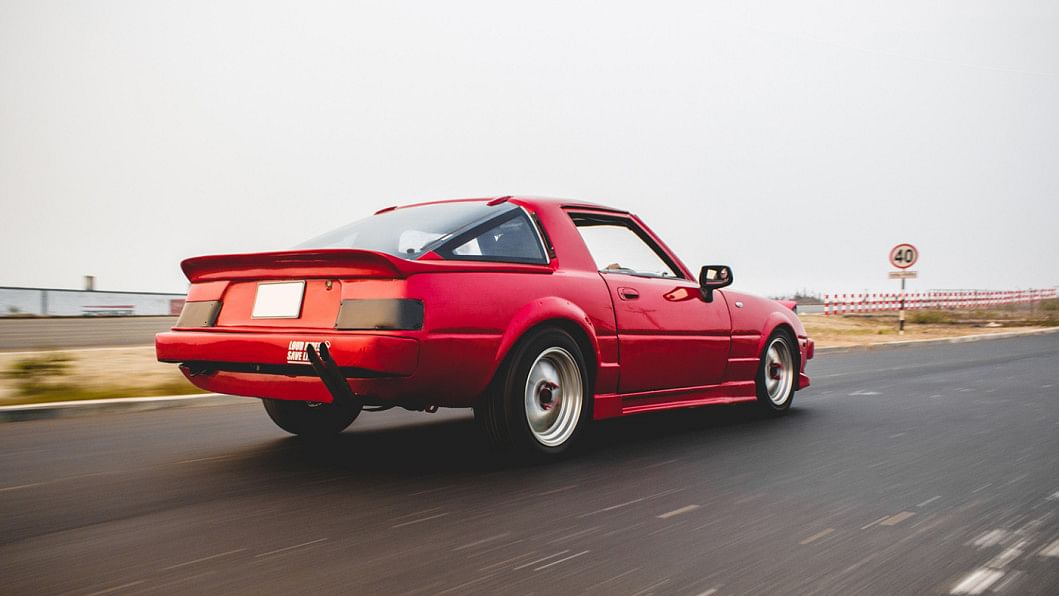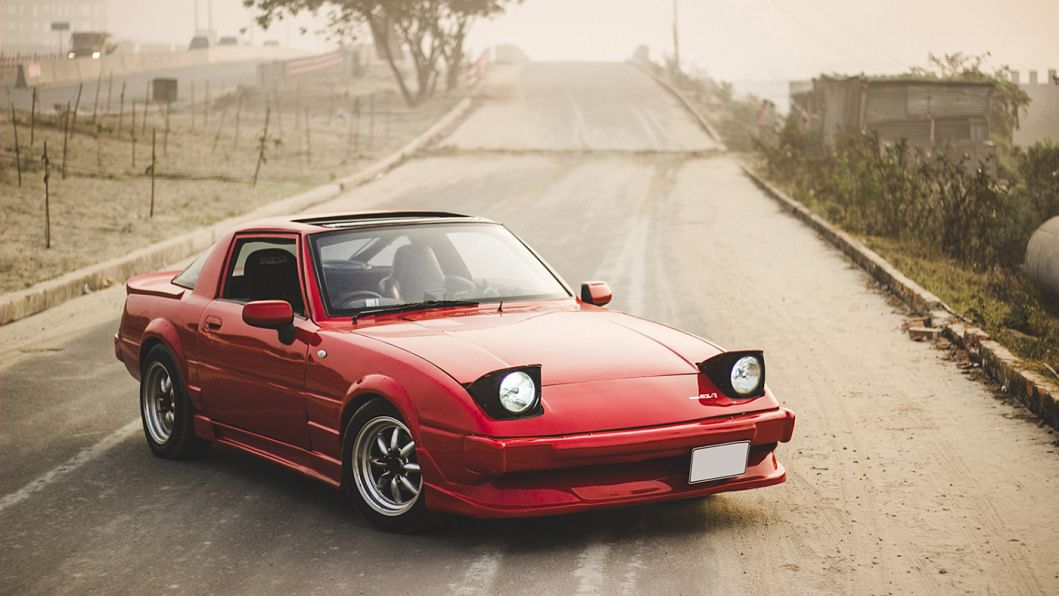Rescuing a Savanna

The idea behind the Wankel rotary has been around as a patent since the early 30's and as a working prototype since the late 50's, and Felix Wankel's rotary design has been adopted by a myriad selection of manufacturers, even powering motorbikes and jet-skis. However, say the words "rotary powered" to any petrolhead and the name Mazda will automatically spring to mind. The Japanese manufacturer's love story with the Wankel rotary has birthed some of the most desirable high performance machines the world has ever seen, from the Cosmo of the 60's to the tuner legend that is the RX7, introduced in 1978 and produced through three generations all the way to 2002.

The RX7 was a replacement for the RX3, a car that now has cult status in Australia, New Zealand and Japan. When it came to developing a successor to the highly capable RX3, Mazda looked to take the rotary sports car into the future, giving the design brief to Matasaburo Maeda. What Maeda-san designed would go on to influence a decade of Japanese technical and aesthetic dominance, and the final product would be the SA22/FB series Savanna RX7.
In Bangladesh, there are only a handful of Savanna RX7s, with some estimating only 5 remaining units in the country. One of them belongs to Azwad Anwar, who has owned his 1978 Savanna for a good three years.
Bought as a disfigured and broken shell of a car from a garage in Chittagong, Azwad recounts his tale of how this Savanna was brought back from the brink of rotting and how at least some of its past glory has been restored.
"The most difficult part of restoring a Savanna is making sure the bodywork lines up. A whole host of parts had to be imported from Japan and it wasn't cheap sourcing parts for the Mazda, but I'm glad I did it," says Azwad.

While the bodywork can still be sorted properly, it's the powertrain that seems to be the issue. The original 12A rotary was long gone, and Azwad had to find a suitable replacement so he could at least drive his precious Mazda instead of waiting for years for a period correct or even a modern rotary motor – they're not exactly cheap and finding a good one can take years. It might seem sacrilegious, but the heart beating inside this candy red Savanna is not from Mazda – it's powered by the 1.8 litre 7K inline-four from the Toyota Noah, utilising a 7K 5-speed manual gearbox with modified bell-housing and shifter. Power stands at around 80 HP and 103 lb-ft of torque, close to the 12A's 100 HP power figure. It's sprightly enough, the low weight of the RX7 and rear wheel drivetrain making it a lively car to drive. Under the sleek lines of the Mazda are aftermarket coilovers to stiffen up the suspension and OEM refurbished brakes with genuine replacement parts. It certainly has gotten back some of its sports car pedigree. As our photographer Farhan reports, the RX7 is slightly tail-happy even with the relative lack of power, and the chassis is poised and fun-loving, like a carpet dog who still wants to play fetch like the big dogs.

As Azwad says, it's not an impossible task for someone to take an old RX7 and have some fun with it, provided you have the funds: "I want to go for a turbo rotary in the future. This car definitely needs more power, but even then I'm quite satisfied with the way it drives and handles now, plus the rarity of the car makes it quite special. This is the oldest car I've owned so far, and I love driving vintage metal because of this Savanna."
It might not be the cleanest or the most authentic restoration job in the country, but Azwad's resto-mod Savanna is definitely a good base to work on. These restoration jobs take years and sometimes decades to pull off properly, but who wouldn't want to drive and enjoy their project car in the meantime? All we know is, this little red sports car has had some life breathed back into it and we're glad it's out there on the road, ruining people's hearing with its custom Shakotan-inspired exhaust. Just imagine the racket it'd make if it had a turbo rotary, then.
Photos: Farhan Ahmed

 For all latest news, follow The Daily Star's Google News channel.
For all latest news, follow The Daily Star's Google News channel. 



Comments